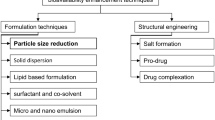Abstract
Soap scum can be effectively removed by using an appropriate surfactant with a chelating agent at a high solution pH. The equilibrium solubilities and dissolution rates of two model soap scums [calcium stearate and magnesium stearate: Ca(C18)2 and Mg(C18)2] were investigated in aqueous solutions containing three different types of surfactants [methyl ester sulfonate (MES) as an anionic surfactant; alcohol ethoxylate (EO9) as a nonionic surfactant; and dimethyldodecylamine oxide (DDAO) as an amphoteric surfactant] in the presence of different biodegradable chelants: trisodium ethylenediamine disuccinic acid (Na3EDDS) and tetrasodium glutamate diacetic acid (Na4GLDA) compared with disodium ethylenediamine tetraacetate (Na2EDTA), a chelant with poor biodegradability. The highest equilibrium solubility and dissolution rate of either soap scum were observed at high pH in the DDAO system with Na4GLDA. In addition, the calcium soap scum had a similar to higher equilibrium solubility and a higher dissolution rate constant as compared with the magnesium soap scum.




Similar content being viewed by others
References
Itsadanont S, Scamehorn JF, Soontravanich S, Sabatini DA, Chavadej S (2013) Dissolution of soap scum by surfactant. Part I. Effects of chelant and type of soap scum. J Surfact Deterg 17:849–857
Soontravanich S, Lopez HE, Scamehorn JF, Sabatini DA, Scheuing DR (2010) Dissolution study of salt of long chain fatty acids (soap scum) in surfactant solutions. Part I. Equilibrium dissolution. J Surfact Deterg 13:367–372
Itsadanont S, Ratanalert D, Soontravanich S, Scamehorn JF, Sabatini DA, Chavadej S (2013) Dissolution of soap scum by surfactant. Part II. Effects of NaCl and added chelant on equilibrium solubility and dissolution rate of calcium soap scum in amphoteric surfactant solutions. J Surfact Deterg 17:859–864
Leštan D, Luo C, Li X (2008) The use of chelating agents in the remediation of metal-contaminated soils: a review. J Environ Pollut 153:3–13
Handcock REW (1984) Alterations in outer membrane permeability. Ann Rev Microbiol 38:237–264
Kołodyńska D (2011) Cu(II), Zn(II), Co(II) and Pb(II) removal in the presence of the complexing agent of a new generation. J Desalin 267:175–183
Schowanek D, Feijtel TCJ, Perkins CM, Hartman FA, Federle TW, Larson RJ (1997) Biodegradation of [S, S], [R, R] and mixed stereoisomers of ethylene diamine disuccinic acid (EDDS), a transition metal chelator. J Chemosp 34:2375–2391
Azko Nobel introduces a new biodegradable chelating agent. http://www.chemserv.com/pdf/Dissolvine%20GL%20Article.pdf. Accessed Aug 2013
Azko Nobel functional chemicals chelates: Dissolvine® GL Technical Brochure. http://www.akzonobel.com/dissolvinegl/system/images/AkzoNobel_Gl_Technical_brochure_tcm80-42056.pdf. Accessed Aug 2013
Callander J, Barford JP (2004) Precipitation, chelation, and the availability of metals as nutrients in anaerobic digestion. I. Methodoloty. Biotechnol Bioeng. doi:10.1002/bit.260250805
Kołodyńska D (2011) Chelating agents of a new generation as an alternative to conventional chelators for heavy metal ions removal from different waste waters. Expanding Issues in Desalination. Maria Curie-Skłodowska University, Poland, pp 339–370
Acknowledgments
Financial support for this work was provided by Rachadapisek Sompote Fund for Postdoctoral Fellowship, Chulalongkorn University; The Thailand Research Fund (TRF)–The Royal Golden Jubilee Ph.D. Program (RGJ); Center of Excellence on Petrochemical and Materials Technology, Thailand; The Petroleum and Petrochemical College, Chulalongkorn University; The Thailand Research Fund (TRF)-Senior Research Scholar Grant (RTA 5780008); The industrial sponsors of the Institute for Applied Surfactant Research at the University of Oklahoma including CESI Chemical Research, Church and Dwight, Clorox, ConocoPhillips, Ecolab, GSK (GlaxoSmithKline), Halliburton, Huntsman, InVia-Westvaco, Novus, Procter and Gamble, Phillips 66, Sasol North America, S.C. Johnson and Son, and Shell Chemical.
Author information
Authors and Affiliations
Corresponding author
About this article
Cite this article
Itsadanont, S., Theptat, P., Scamehorn, J.F. et al. Dissolution of Soap Scum by Surfactants. Part III. Effect of Chelant Type on Equilibrium Solubility and Dissolution Rate of Calcium and Magnesium Soap Scums in Various Surfactant Systems. J Surfact Deterg 18, 925–932 (2015). https://doi.org/10.1007/s11743-015-1731-5
Received:
Accepted:
Published:
Issue Date:
DOI: https://doi.org/10.1007/s11743-015-1731-5




